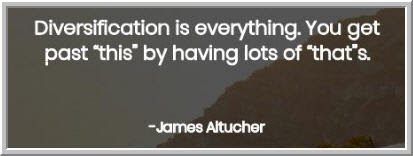[ad_1]
A lot of trading wisdom repeated by traders is surprisingly unintelligent. A good example is the mantra that it is important to “have a process” for your trading and follow that process religiously. Sounds great–until markets change and the process that worked in one kind of market no longer works. If a business repeated a process endlessly, it would never adapt to changes in consumer tastes, new opportunities, etc. Similarly, a singular focus on “discipline” is shorthand for a failure to innovate.
Which brings us to yet another piece of common wisdom that masquerades as wisdom: Be patient and only put on your very best trade ideas. Sounds great! Don’t overtrade and wait for the really good “A+” opportunities.
Not so.
The problem with that view is that opportunities differ across time frames, as well as across instruments. While it could make sense to trade a short-term pattern from the long side, this might be a mere blip for a good longer-term short trade. When we trade multiple patterns that are relatively uncorrelated (or perhaps even negatively correlated), we as traders achieve the diversification normally associated with investing.
We can think of it this way: an investor diversifies holdings at a given point in time. The investor might hold in a portfolio relatively uncorrelated positions in currencies, rates, stocks, etc. That diversification allows trades with a decent Sharpe ration to create a portfolio with a truly superior Sharpe. If you put enough different edges together in a portfolio, the portfolio will show relatively smooth positive returns, because some ideas are always working when others aren’t. That’s the beauty of diversification.
The active trader tends to participate in fewer opportunities at any given point in time, but over time will trade multiple cycles and trends, some shorter-term, some longer-term, some in one instrument, some in another. Note: A flexible trader might put on multiple long and short trades during the day, achieving over time what the investor structures all at once: diversification!
Sitting passively and not trading until the perfect trade presents itself is not discipline; it’s the essence of being a one-trick pony. And when the market changes, the one-trick pony becomes a lame horse. Many different edges of different quality and different instruments and different time frames creates what we might call a “trader’s portfolio”. It’s a lot harder to lose when we have many ways to win.
Good traders have an edge. Great ones constantly find new ones.
*
Further Resources:
*
[ad_2]
Image and article originally from traderfeed.blogspot.com. Read the original article here.

